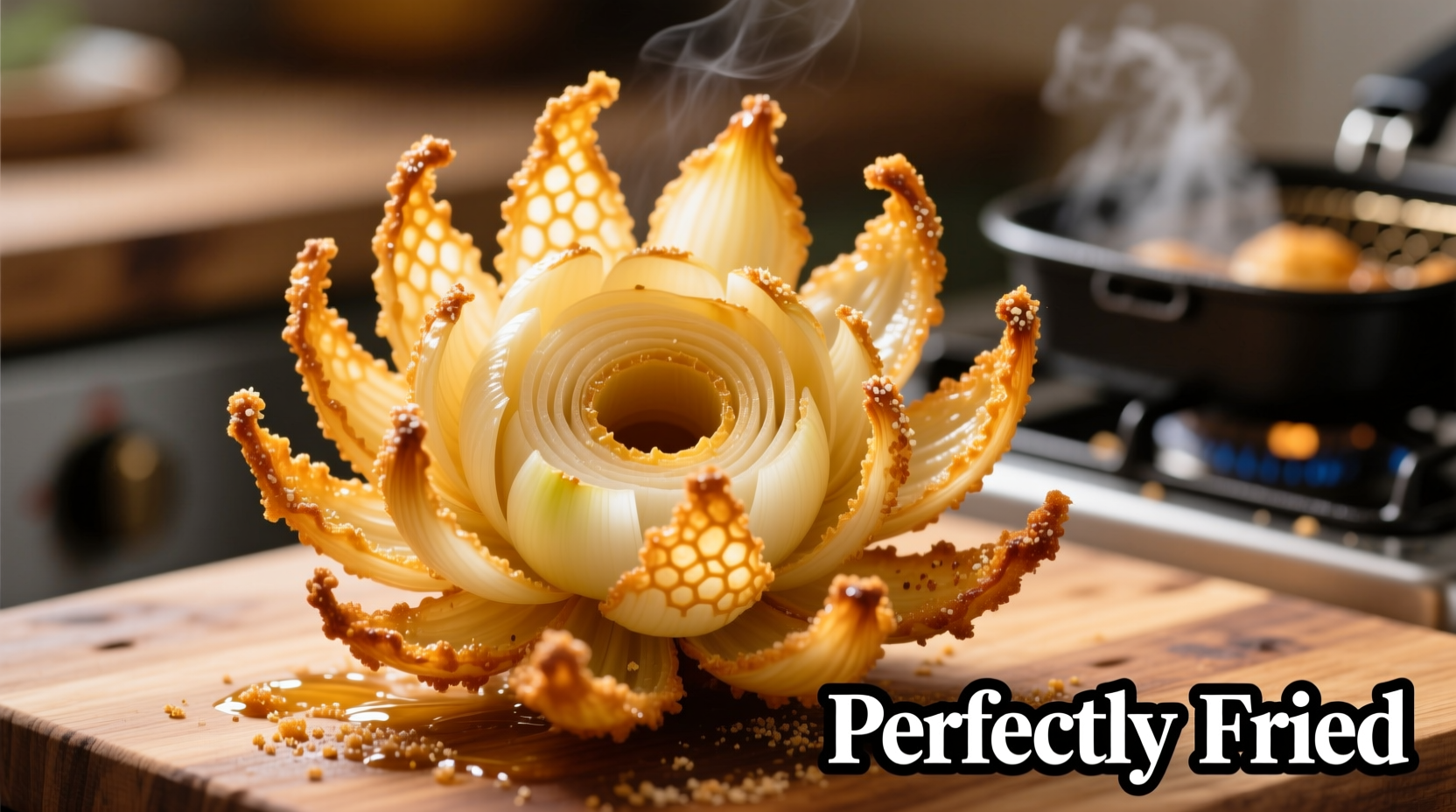The term "awesome blossom onion" is a common misnomer for the popular restaurant appetizer known as the blooming onion. This deep-fried onion dish, famously served at chains like Outback Steakhouse, features a whole onion cut to resemble a flower that "blooms" when fried. Proper preparation requires a large sweet onion, precise cutting technique, and careful deep-frying at 375°F (190°C) for optimal results.
What Exactly Is a Blooming Onion (Not "Awesome Blossom")?
Despite frequent confusion in search terms, there's no culinary dish officially called an "awesome blossom onion." The correct term is blooming onion—a whole onion sliced in a radial pattern, battered, deep-fried, and served to resemble a blooming flower. This appetizer became famous through Outback Steakhouse's "Bloomin' Onion," introduced in 1988, though similar preparations exist in various culinary traditions worldwide.
When searching for "awesome blossom onion," you're likely seeking information about this iconic restaurant appetizer. Let's explore everything you need to know to understand and recreate this popular dish at home.
The Evolution of the Blooming Onion: From Restaurant Specialty to Home Kitchen Favorite
- Pre-1988: Various cultures had traditions of frying whole onions, but not in the distinctive "blooming" style
- 1988: Outback Steakhouse introduces the "Bloomin' Onion" as a signature appetizer
- Early 1990s: The dish gains national popularity across American restaurant chains
- 2000s: Home cooking enthusiasts begin attempting recreations
- 2010s-Present: Numerous YouTube tutorials and recipe blogs make the technique accessible to home cooks
Essential Equipment and Ingredients for Perfect Blooming Onions
Creating a successful blooming onion at home requires specific tools and ingredients. While restaurants use specialized cutters, home cooks can achieve excellent results with basic kitchen equipment.
| Essential Item | Home Kitchen Alternative | Why It Matters |
|---|---|---|
| Large sweet onion (Vidalia or Walla Walla) | Any large sweet onion variety | Sweet onions have lower sulfur content, creating milder flavor when fried |
| Deep fryer | Heavy-bottomed pot with thermometer | Precise temperature control prevents soggy or burnt results |
| Specialty onion cutter | Sharp chef's knife + chopsticks for safety | Chopsticks prevent cutting all the way through the onion base |
| Commercial batter mix | Homemade batter (flour, cornstarch, spices) | Customizable flavor and texture control |
Step-by-Step Guide to Creating Your Own Blooming Onion
Follow these professional techniques to achieve restaurant-quality results in your home kitchen:
Preparation Process
- Select the right onion: Choose a large (3-4 inch diameter), firm sweet onion with intact root end
- Cutting technique: Place chopsticks on either side of the onion to prevent cutting through the base, then make 16-24 radial cuts from the top down
- Rinsing step: Soak the cut onion in ice water for 30-60 minutes to help the "petals" separate
- Batter preparation: Use a light, crispy batter with cornstarch for maximum bloom effect
- Frying temperature: Maintain oil at precisely 375°F (190°C) using a thermometer
- Frying time: 3-4 minutes until golden brown and fully "bloomed"

Common Mistakes That Ruin Homemade Blooming Onions
Even experienced home cooks encounter challenges with this dish. Understanding these limitations will improve your results:
- Using the wrong onion variety: Yellow or red onions contain more sulfur, creating an unpleasantly sharp flavor when fried
- Incorrect oil temperature: Below 360°F creates greasy results; above 390°F burns the exterior before the interior cooks
- Cutting too deep: Severing the root base prevents the onion from maintaining its bloom structure
- Skipping the ice water soak: Without this step, the petals won't separate properly during frying
- Overcrowding the fryer: Adding multiple onions at once drops oil temperature significantly
Creative Variations Beyond the Classic Recipe
Once you've mastered the traditional preparation, experiment with these professional variations:
- Gluten-free version: Substitute rice flour and tapioca starch for traditional wheat flour
- Spicy Cajun style: Add cayenne, paprika, and garlic powder to the batter
- Asian-inspired: Use tempura batter with sesame seeds and serve with sweet chili dipping sauce
- Baked alternative: For a healthier option, air-fry at 400°F with light oil spray (though bloom effect is reduced)
- Mini versions: Use smaller sweet onions for individual portions
Serving Suggestions and Dipping Sauces
The perfect dipping sauce enhances your blooming onion experience. Professional chefs recommend these pairings:
- Classic: Signature bloom sauce (mayo, ketchup, horseradish, lemon juice)
- Cooling contrast: Ranch dressing with fresh dill and garlic
- Spicy kick: Chipotle aioli for heat lovers
- Lighter option: Lemon-dill yogurt sauce for balance
For best results, serve immediately after frying while still hot and crispy. The bloom structure begins to collapse as it cools, so timing is crucial for maximum visual impact.
Nutritional Considerations for Health-Conscious Foodies
While undeniably indulgent, understanding the nutritional profile helps make informed choices:
- A restaurant-style blooming onion typically contains 800-1,200 calories
- Most calories come from the batter and oil absorption during frying
- Onions themselves provide vitamin C, B6, and dietary fiber
- Sharing with 2-3 people makes this a reasonable occasional treat
- Home preparation allows control over oil quality and quantity











 浙公网安备
33010002000092号
浙公网安备
33010002000092号 浙B2-20120091-4
浙B2-20120091-4